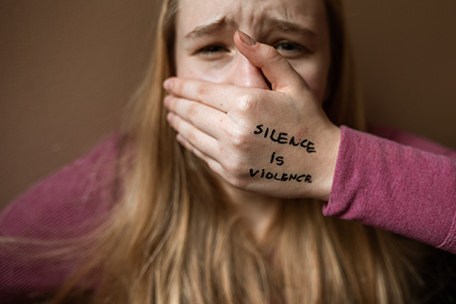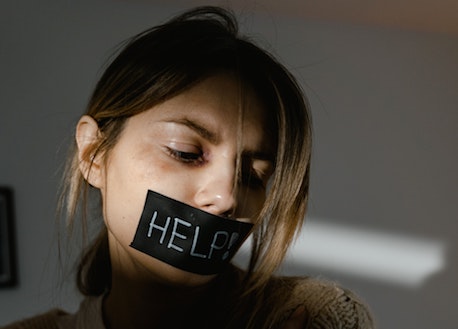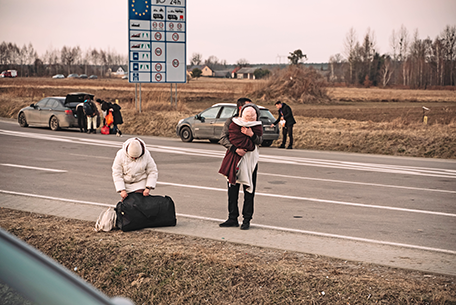Human Trafficking: Is It a Crime?
This blog post was written by Liluye Guest, Blog Post Writer, Karin vonKrenner, who is a thought leader, journalist, positive disruptor, and strategic forecaster. Her website is: kvkrenner.com.
In 2007, UNODC (United Nations Office on Drugs and Crime) busily gathered information to create it’s first report on current global responses to human trafficking issues. They had the resources and, international access. A laudable use of funds.
The original study included 155 countries and was the first to gather and assess data on both local legislation and enforcements. As step towards a global solution, it has been growing moss ever since.
While there has been an increased awareness of the issue via social media and “victim stories,” the primary issue remains unaddressed. Fractured responses in accepting/defining it as a crime. And, legitimate, linked and enforceable international laws to combat it.
Commenting on the 2007 report, Antonio Maria Costa (Executive Director of UNODC), noted “many governments are still in denial. There is even neglect when it comes to either reporting on or prosecuting cases of human trafficking.”
15 years (and billions of dollars) later, we are rocking the same boat in the same sea. We still lack a legitimate, global legal enforcement system against human traffickers and related crimes.
To date, the UN Convention Against Transnational Organized Crime, (related protocols: 1.) UN Protocol to Prevent, Suppress and Punish Trafficking in Persons and 2.) UN Protocol Against the Smuggling of Migrants by Land, Sea and Air /2003) lack the global authority to enforce their directives. Like red, Italian traffic lights, they are “merely a suggestion.”
Human trafficking directives are in direct contrast to the International Hague Convention on Kidnapping. This legal convention, unburdened by legitimate objections, will happily chase an absconding parent around the world, funded by the governments. Contrarily, human traffickers are free to “do business” in negligible fear of international legal reprisals. Interpol prefers chasing kidnapping parents to traffickers. They are easier to catch.
The value of a trafficked life is in the hands of current market trends, not unlike Wall Street stock shares. The two have a lot in common. Big business opportunities and calculable profit margins. An early 2014 report estimated illegal profits from human trafficking/slavery to be over 150 billion per year. Add eight years, plus an economic crisis, and “profits in these shares” have more than doubled.
We must, in understanding this dark market acknowledge that on both sides of the fence, the money is extremely green. Billions are spent across the dark, global economic market of “trafficking” through the buying and selling of lives. Equally, governments are spending billions more either “fighting” human trafficking or, in “supporting” victims. You might say, misery prints money.
Bridging the nefarious gap between so-called official “rescue and support” efforts are non-profit organizations and private individuals. Additionally, every year, millions of dollars and euros flow for “research” projects re-evaluating this crisis. Again, and again. We know it’s a crisis, re-confirming the obvious is, well, obvious.
In a 2005 report, Newcomb noted common flaws and issues regarding the use of anti-trafficking funds. These included aversion to risks (a general leeriness about funding new ideas) and highly increasing amounts of money spent on marketing or so-called “awareness raising.” Further reports indicate primary and continuing issues in anti-trafficking programs are: inefficiency, ineffectiveness, limited impact, and sustainability.
Which bring us, like carousel riders, back around again, missing that not-so-shiny Brass Ring… the law.
Localized, conflicting legal systems, perceptions, and definitions. Is it a crime? (That one simply floors me in this day and age…) If so, is it a “serious crime,” like say, murder? Or simply an annoying misdemeanor/slap on the wrist event? These basic questions continue to plague efforts to create any level of international cooperation to sustainably address human trafficking. The lack of cohesive legal enforcements continues to cripple any real effort to stop this global crisis. Which begs the question… how much is a life really worth?
If we cannot even agree, legally, that human trafficking/slavery is a crime, how the hell do we even create laws to address it? Local, or, international?
In May 2022, (this is this year folks!) California voted down Senate Bill 1042, legally defining human trafficking as a “violent crime.” Previous, and current California law, defines human trafficking as a “non-serious” and “non-violent” crime. New York had its elite East Coast, Henry Epstein political crowd to satiate. One might surmise California is still calculating the cost of denying “services” to its Hollywood moguls and tech bosses.
If the U.S., a world leader and “democratic” country (in the throes of slavery reparation discussions) cannot agree internally that this is a violent, serious crime with heavy, legal ramifications, what does that broadcast to the world?
Without a global, legal definition and enforcement system to combat human trafficking, the hard truth is, it is here to stay, and, grow. Events, including the war in Ukraine, the environmental crisis, and increasing poverty will fuel the trend. Women and children will continue to pay the price for ineffective governments, ineffectual legal systems, and corrupt politics.
Bottom line, a human life has a monetary value. Whether it is designated by a government formulae for insurance companies, or your local, corner trafficker. Money talks louder than human misery.
Lady Justice, you are blind and bound, like a slave.
References:
1. U.S. Government Annual Trafficking In Persons Report
2. Anti-Trafficking Review
3. Profits and Poverty: The Economics of Poverty
4. La Strada International
5. El PAaCTO
6. U.S. Government Accountability Office
© Karin vonKrenner 05-2022




